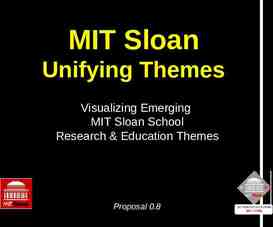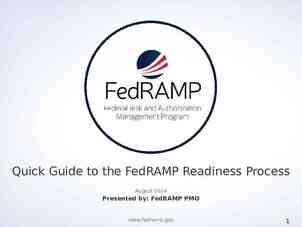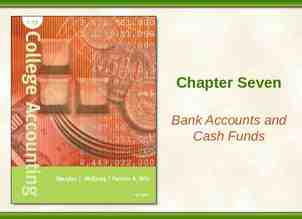*Functional Styles Stylistics Lecture 9
18 Slides82.40 KB
*Functional Styles Stylistics Lecture 9
*9.1. The classifications of functional styles *9.2. Literary Styles *9.3. Colloquial styles Functional Styles
*Functional style – "a system of coordinated, interrelated and interconditioned language means intended to fulfill a specific function of communication and aiming at a definite effect” (I. R. Galperin).
The problem of functional styles classification is very complicated. It is due to several reasons: *Functional styles intertwine *Functional styles are historically inconstant *Functional styles are connected with genres.
I. R. Galperin distinguishes 5 functional styles: *scientific, *official, *publicist, *newspaper, *belles-lettres. ( based on the written variety of the language)
Yuri Skrebnev in addition to Literary or Bookish Styles adds *Free or Colloquial Styles: a) literary colloquial style, b) familiar colloquial style.
*a) scientific, *b) official documents, *c) publicist (newspaper), *d) newspaper, *e) belles-lettres. *Literary Styles
The Scientific Prose Style in professional communication. The functions: *to describe new concepts, international laws of existence and ground some scientific research; *to communicate the findings to global scientific society. 3 sub-styles: *texts of theoretical and applied sciences (humanities, exact and natural sciences); *texts of study books (for school, college, university students); *texts of popular scientific prose.
General peculiarities: *The main function is intellectual communicative. *There is lack or limitation of contact with an addressee. *The complicated material is stated in an intelligible, consistent and precise manner. *Every passage begins with the key sentence rendering the core idea. *Texts meet the requirements of logical coherence and objectivity in stating the ideas. *Quotations and references are widely used.
Vocabulary peculiarities: *The abundance of special terms *Scientific prose style is mostly unemotional. *Special set phrases and adverbs: *The use of bookish words: perform, comprise, susceptible, approximate, simultaneous. *The logical emphasis may be expressed lexically *Quantitative expressiveness exceeds qualitative one: much less limited, much the same, most essential.
Grammatical peculiarities: Morphology: * The author's speech – the 1st person "we": we are coming to realise. * Impersonal sentences with "it" and constructions with "one. * The preference is given to the passive voice and non-personal forms of the verb. * Present Continuous and Future tenses are used more often than Present Simple. Syntax: * The sentences used are mainly complex and if simple, rather extended. * The word order is mainly direct. * The wide use of attributes, almost each noun has a post- or prepositional attribute, prepositional, participial, gerundial or infinitive construction. * The use of specific prepositional groups: ultra rapid computer machines. * The abundance of conjunctions and connectives: not merely . but also, whether . or, both . and, as . as .; thereby, therewith, hereby.
The Official Style (Style of Official Documents) – conservative, forms of structuring and clichés, syntactical constructions, archaic words, complete clarity of the subject matter, all emotiveness and subjective modality are completely excluded. The functions: *1. to reach agreement between two contracting parties; *2. to state the conditions binding two parties in an understanding. The sub-styles are: *1. style of business letters, *2. style of legal documents, *3. style of diplomacy, *4. style of military documents.
Vocabulary peculiarities: * Each of sub-styles of official documents makes use of special terms and bookish words. * The documents use set expressions inherited from early Victorian period. * Legal documents contain a large proportion of formal and archaic words used in their dictionary meaning. * In diplomatic and legal documents many words have Latin and French origin. * There are a lot of abbreviations and conventional symbols. Grammatical peculiarities: * Compositional pattern: every document has its own stereotyped form. The form itself is informative and tells you with what kind of letter we deal with. * Syntactical features – the predominance of extended simple and complex sentences, wide use of participial constructions, homogeneous members. * Morphological peculiarities are passive constructions, they make the letters impersonal. There is a tendency to avoid pronoun reference.
The Publicist Style - pragmatic function of persuasion directed at influencing the reader and shaping his views, in accordance with the argumentation of the author. The functions: *to exert a constant and deep influence on public opinion, *to convince the reader or the listener that the interpretation given by the writer or the speaker is the only correct one, *to cause the audience to accept the point of view not only by logical argumentation, but by emotional appeal as well *It is widely used for propaganda. The sub-styles are: Oral form: *the oratory/ public speeches; *radio and TV commentary. Written form: *essays (moral, philosophical, literary); *reviews in journals and magazines, pamphlets; *journalistic articles (political, social, economic).
General peculiarities: *brevity of expression (sometimes epigrammatic); *combination of logical argumentation and emotional appeal – features, common with the style of scientific prose and emotive prose; *coherent and logical syntactical structure, expanded system of connectives and careful paragraphing; *use of words with emotive meaning, the use of other stylistic devices (SDs) as in emotive prose, but the SDs are not fresh or genuine.
The Newspaper Style is found in newspapers. Newspaper Style - informative materials, characteristic of newspaper only and not found in other publications. The functions: *to inform and instruct the reader; *to transfer the information objectively in oral and written form without introducing any subjective or emotional evaluation. The sub-styles are *brief news items and communiqués; *advertisements and announcements; *headlines; *the editorial.
General lexical peculiarities: *Proper names: toponyms, anthroponoms, names of institutions and organizations, *A lot of numerals and dates. *Abundance of internationalisms. *Tendency to produce neologisms e.g. vital issue, pillar of society. *A great number of special political and economic terms, non-term political vocabulary, abstract words, newspaper clichés, abbreviations. General grammatical peculiarities: *Syntactic constructions, indicating a lack of assurance of the reporter as to the correctness of the facts reported or his desire to avoid responsibility. *Complex sentences with a developed system of clauses. *Syntactical complexes: verbal constructions (infinitive, participial, gerundial) and verbal noun constructions. *Specific word order – five-w-and-h-pattern rule. *Attributive noun groups (the national income and expenditure figures). *A lot of quotations and direct speech, a developed system of direct speech rendering. *A simple verb is often substituted by a set expression: e.g. make contact with, exhibit a tendency to, serve the purpose of.
The Belles-lettres Style/ the Style of Imaginative Literature - the richest register of communication. The aims: *to inform and persuade the reader; *to aesthetically impress the reader. The sub-styles are: *Emotive Prose *Poetry *Drama General peculiarities: *Genuine, not trite, imagery achieved by purely linguistic devices. *The use of words in contextual and very often in more than one dictionary meaning, or at least greatly influenced by the lexical environment. *A vocabulary which will reflect the author's personal evaluation of things or phenomena. *A peculiar individual selection of vocabulary and syntax. *The introduction of the typical features of colloquial language.























